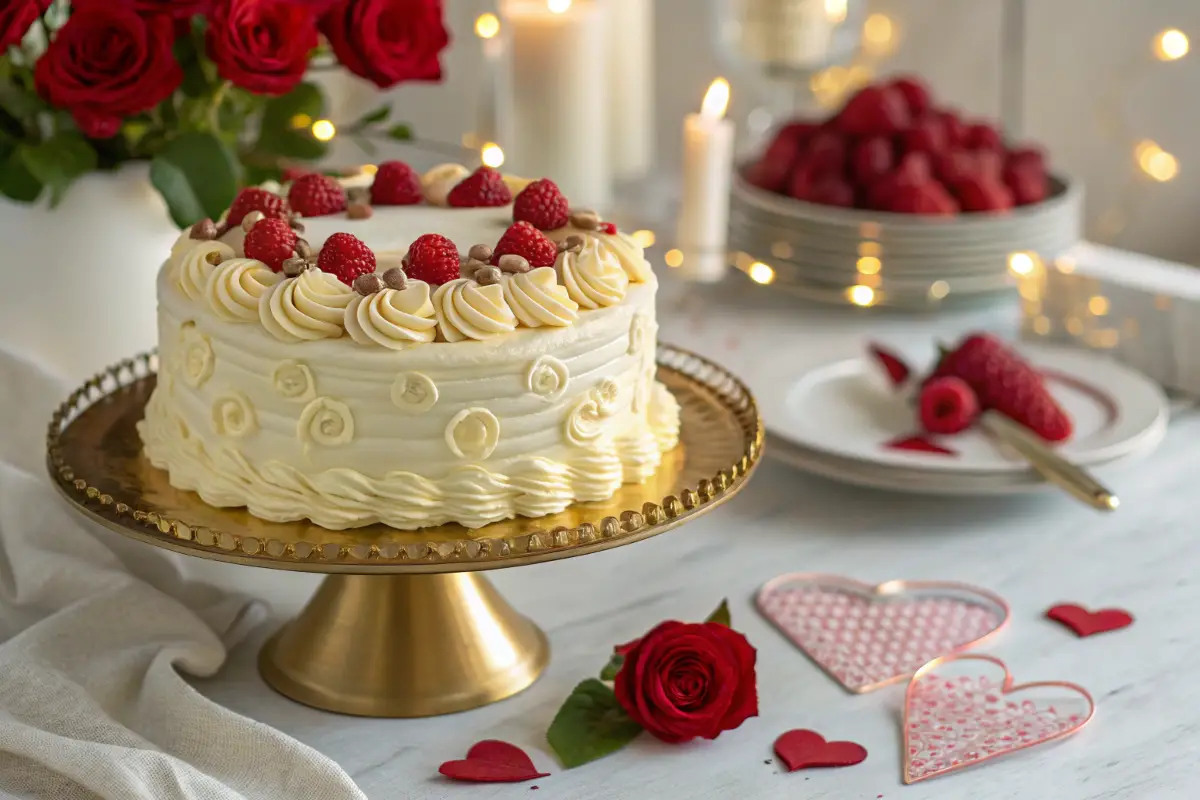Valentine Cake – A Sweet Expression of Love
Valentine’s Day is the perfect occasion to express love, and what better way than with a delicious Valentine cake? Whether you prefer a classic red velvet, a chocolate-covered delight, or a light and fruity sponge, a homemade cake adds a personal touch to the celebration. From heart-shaped designs to romantic frosting ideas, this guide will help you bake the perfect cake for your special someone.
In this article, we’ll explore the best Valentine cake ideas, including step-by-step recipes, decoration tips, and creative variations. Whether you’re a beginner or an experienced baker, you’ll find easy yet elegant cake designs that will make this Valentine’s Day unforgettable. So, put on your apron and let’s bake some love!
Table of contents
- Valentine Cake – A Sweet Expression of Love
- History and Origins of Valentine Cake
- Ingredients for the Perfect Valentine Cake
- Step-by-Step Guide to Making the Perfect Valentine Cake
- Variations and Customizations for Your Valentine Cake
- Serving the Perfect Valentine Cake
- Conclusion: A Sweet Way to Celebrate Love
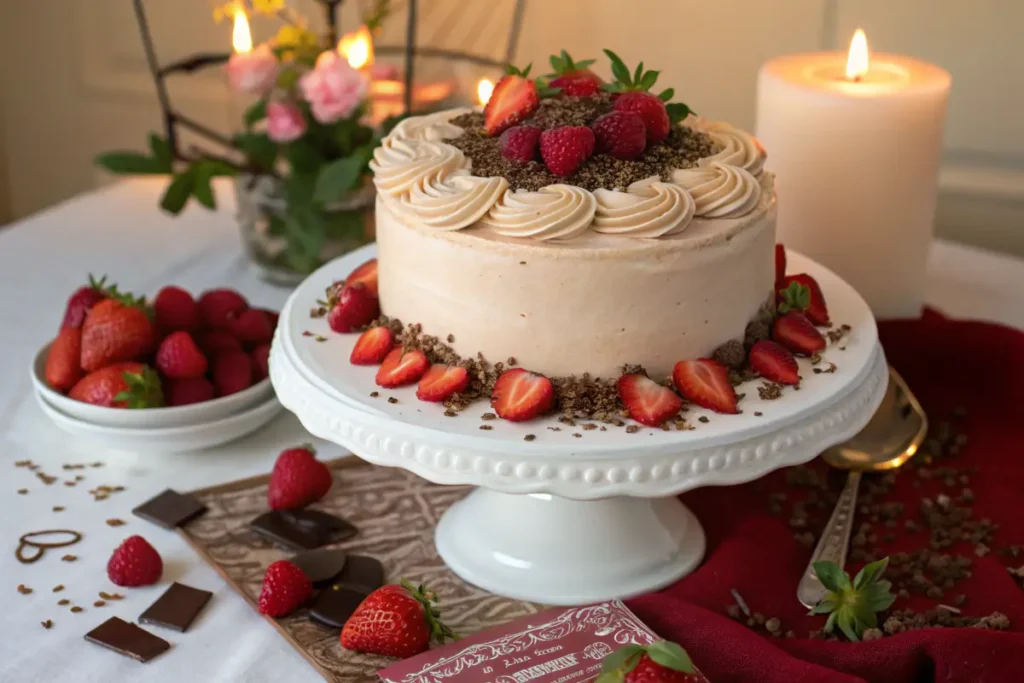
History and Origins of Valentine Cake
Valentine’s Day has long been associated with sweet treats, and cakes have played a significant role in this tradition. While chocolates and candies are common gifts, baking a homemade Valentine cake adds a personal and heartfelt touch. But how did this tradition begin?
The Sweet Beginnings
The connection between Valentine’s Day and desserts dates back to ancient times. In medieval Europe, people exchanged sweet delicacies to express love and affection. Over time, the tradition evolved, and by the 19th century, cakes became a staple of Valentine’s Day celebrations. During this period, bakeries started selling elaborately decorated cakes, often adorned with roses, hearts, and romantic messages.
Modern-Day Valentine Cakes
Today, Valentine cakes come in many forms, from luxurious chocolate creations to simple homemade sponge cakes. With advancements in baking techniques, people now experiment with unique flavors, artistic decorations, and personalized messages. No matter the variation, one thing remains the same—a Valentine cake is a delicious way to show love and appreciation.
Ingredients for the Perfect Valentine Cake
Baking a delicious Valentine cake starts with selecting the right ingredients. The quality of each ingredient plays a crucial role in determining the cake’s taste, texture, and overall appeal. To ensure the best results, always use fresh, high-quality ingredients. Below, we’ll break down the essential components needed to create a mouthwatering cake, along with variations for different dietary preferences.

Essential Ingredients for Valentine Cake
Before getting started, gather these key ingredients. Each one contributes to the cake’s structure, moisture, and flavor, so choosing the best options makes a noticeable difference.
1. Flour – The Foundation of Your Cake
Flour provides the cake’s structure, ensuring it holds its shape while remaining light and fluffy. For most Valentine cakes, all-purpose flour or cake flour works best. However, if you’re looking for a gluten-free option, almond flour or a gluten-free baking mix can be excellent alternatives.
2. Sugar – Adding Sweetness and Moisture
Sugar does more than just sweeten the cake. It helps create a tender texture and keeps the cake moist. While granulated sugar is commonly used, alternatives like coconut sugar, honey, or maple syrup can add unique depth to the flavor. If you prefer a low-sugar cake, try monk fruit sweetener or erythritol for a healthier option.
3. Eggs – The Key to Structure and Richness
Eggs provide stability, moisture, and richness to the cake. For a fluffier texture, separate the yolks and whites, whipping the whites before folding them into the batter. If you’re making a vegan Valentine cake, you can substitute eggs with flaxseed eggs, applesauce, or mashed bananas.
4. Butter or Oil – Creating a Tender and Moist Cake
Butter enhances flavor and gives the cake a soft, buttery crumb. However, vegetable oil or coconut oil can make the cake even more moist. If you’re looking for a dairy-free option, vegan butter or olive oil works well without sacrificing flavor.
5. Milk or Buttermilk – Enhancing Texture and Moisture
Milk adds richness and helps create a soft texture. Many bakers prefer buttermilk because its slight acidity reacts with baking soda, making the cake even lighter. For dairy-free alternatives, try almond milk, coconut milk, or oat milk mixed with a teaspoon of vinegar to mimic buttermilk’s effects.
6. Baking Powder and Baking Soda – Ensuring a Fluffy Cake
Leavening agents like baking powder and baking soda are crucial for helping the cake rise properly. Always check that your baking powder and soda are fresh, as expired leavening agents can lead to a dense cake.
7. Vanilla Extract – Adding Depth of Flavor
A high-quality pure vanilla extract enhances the cake’s overall taste. If you want to experiment with flavors, try almond extract, rose essence, or orange zest for a unique twist.
8. Chocolate or Cocoa Powder – A Classic Valentine’s Choice
Many Valentine cakes feature chocolate or cocoa powder for a rich and decadent flavor. When choosing chocolate, opt for high-quality dark chocolate or Dutch-processed cocoa powder for a deep and luxurious taste. If you prefer a fruitier cake, you can substitute chocolate with strawberry puree, raspberry preserves, or lemon zest.
9. Food Coloring – Creating a Romantic Look
For a visually stunning cake, especially red velvet or pink strawberry cakes, a few drops of food coloring can enhance the presentation. Use natural beet powder, pomegranate juice, or freeze-dried strawberry powder for a healthier alternative to artificial food dyes.
10. Frosting and Decorations – The Finishing Touch
No Valentine cake is complete without a beautiful frosting. Whether you prefer cream cheese frosting, buttercream, ganache, or whipped cream, the right topping enhances both taste and appearance. For decoration, consider using fresh berries, edible flowers, sprinkles, or chocolate shavings to make your cake extra special.
Ingredient Substitutions for Special Diets
If you or your loved one has dietary restrictions, here are some easy substitutions:
- Gluten-Free: Use almond flour, coconut flour, or gluten-free all-purpose flour.
- Dairy-Free: Replace milk with almond milk, coconut milk, or oat milk and use vegan butter.
- Vegan: Swap eggs for flax eggs or applesauce, and use vegan butter and dairy-free milk.
- Low-Sugar: Substitute sugar with monk fruit sweetener, erythritol, or coconut sugar.
Step-by-Step Guide to Making the Perfect Valentine Cake
Now that all the ingredients are ready, it’s time to bring them together and create a delicious Valentine cake that will impress your loved one. Whether you’re an experienced baker or a beginner trying this for the first time, following a structured process will help you achieve the best results. To ensure success, we’ll go through each step carefully while sharing expert tips to make your cake light, moist, and full of flavor.
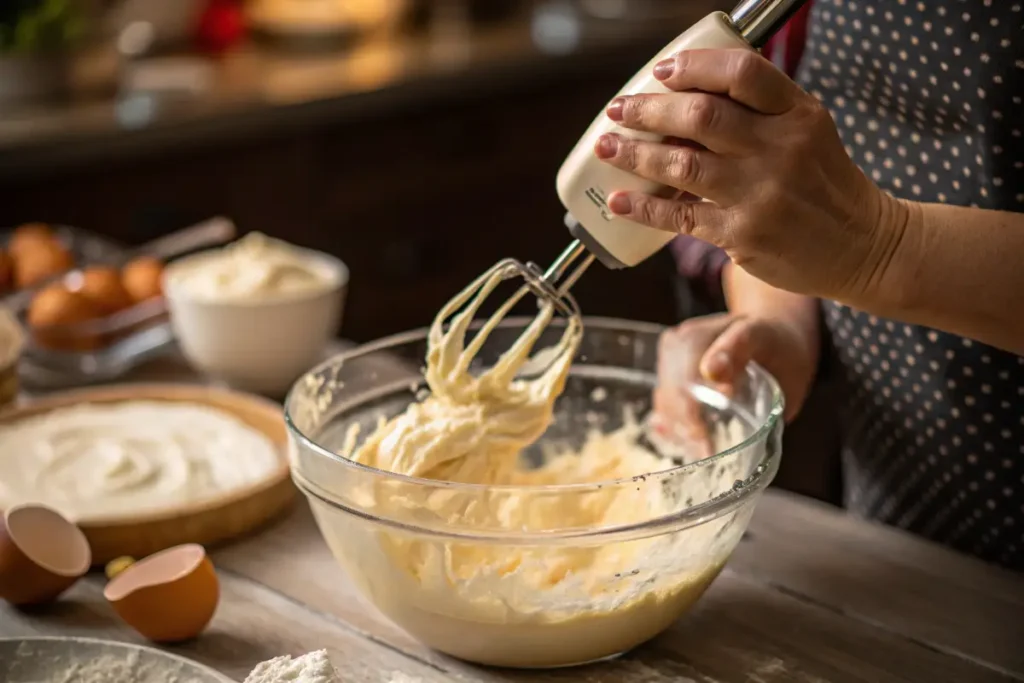
1. Preparing Your Baking Equipment and Ingredients
Before mixing the batter, it’s important to prepare everything in advance. This not only saves time but also prevents unnecessary mistakes.
- Preheat the oven to 350°F (175°C) to ensure even baking. A properly preheated oven prevents the cake from sinking or cooking unevenly.
- Grease and line the cake pans with butter and flour or use parchment paper to avoid sticking. This small step makes it easier to remove the cake later.
- Measure all ingredients accurately using measuring cups or a digital scale. Even minor miscalculations can change the cake’s texture.
- Allow butter, eggs, and milk to reach room temperature for better mixing. Cold ingredients don’t blend well and may lead to a dense cake.
2. Mixing the Cake Batter
Once everything is set, it’s time to mix the ingredients. This step is crucial because the way you mix determines the cake’s texture and consistency.
A. Creaming the Butter and Sugar
Start by beating butter and sugar together until the mixture turns light and fluffy. This process introduces air into the batter, which helps the cake rise properly. If using oil instead of butter, whisk it with the sugar until smooth.
B. Adding Eggs and Vanilla
Next, add the eggs one at a time, beating well after each addition. This ensures the batter stays smooth. After that, mix in vanilla extract or any other flavoring you prefer.
C. Combining Dry Ingredients
In a separate bowl, sift together the flour, baking powder, baking soda, and salt. Sifting prevents clumps and ensures the ingredients are evenly distributed.
D. Alternating Wet and Dry Ingredients
To avoid overmixing, add the dry ingredients in three parts, alternating with milk or buttermilk. Always begin and end with the dry ingredients. Stir gently after each addition, just until the mixture is combined. Overmixing can cause a dense cake, so stop as soon as you no longer see dry flour.
E. Folding in Additional Flavors
If making a chocolate Valentine cake, fold in melted chocolate or cocoa powder at this stage. For a fruitier option, gently stir in strawberry puree, raspberry preserves, or citrus zest.
3. Baking the Cake Evenly
Now that the batter is ready, it’s time to bake the cake to perfection. To ensure even cooking, follow these guidelines:
- Divide the batter evenly between the prepared cake pans and smooth the tops with a spatula.
- Tap the pans gently on the counter to remove air bubbles. This prevents large holes inside the cake.
- Place the pans on the center rack of the oven to ensure even heat distribution.
- Bake for 25-35 minutes, depending on the cake size. To check doneness, insert a toothpick in the center—if it comes out clean, the cake is ready.
- Rotate the pans halfway through baking if your oven has uneven heating. This prevents one side from browning too much.
4. Cooling the Cake for the Best Texture
Proper cooling is just as important as baking. If the cake is too warm when frosted, the icing will melt and lose its shape.
- Let the cakes rest in their pans for 10-15 minutes before attempting to remove them.
- Run a knife along the edges to loosen the cake, then gently turn it out onto a wire rack.
- Allow the cake to cool completely before decorating. If time allows, wrap the layers in plastic wrap and refrigerate them for at least one hour. This makes frosting easier.
5. Choosing and Preparing the Frosting
The right frosting enhances both the taste and appearance of your Valentine cake. Depending on the flavor you want, you can choose from various options.
A. Types of Frosting to Consider
Each type of frosting creates a different texture and look:
- Buttercream frosting – Smooth, creamy, and easy to spread.
- Cream cheese frosting – Perfect for red velvet or chocolate cakes.
- Chocolate ganache – A rich, glossy finish for an indulgent touch.
- Whipped cream frosting – Light and airy, great for fruity cakes.
B. Frosting the Cake Smoothly
To achieve a flawless finish, follow these simple tips:
- Apply a crumb coat by spreading a thin layer of frosting over the cake. This helps trap loose crumbs and creates a smooth base.
- Chill the cake for 15 minutes after the crumb coat sets. This makes the final frosting easier to spread.
- Use a spatula or cake scraper to create a polished look. If desired, pipe decorative swirls or patterns using a piping bag.
6. Decorating Your Valentine Cake
Once the cake is frosted, it’s time to add a romantic touch with decorations. Creativity is key here, so feel free to experiment.
A. Simple Yet Elegant Decorations
- Fresh berries like strawberries and raspberries add color and natural sweetness.
- Chocolate curls or shavings create a gourmet appearance.
- Edible flowers provide a delicate and sophisticated touch.
- Sprinkles or sugar pearls add texture and a festive feel.
- Melted chocolate or piping gel can be used to write a heartfelt message.
7. Serving and Storing Your Cake
Your homemade Valentine cake is finally ready! To enjoy it at its best, consider these serving and storage tips:
- For the best texture, serve the cake at room temperature. If refrigerated, let it sit for 30 minutes before slicing.
- Use a sharp, warm knife to cut clean slices. Wipe the blade after each cut for neat edges.
- Store leftovers in an airtight container at room temperature for up to two days, or refrigerate for up to five days.
- Freeze cake slices individually if you plan to store them for longer. Cakes can be frozen for up to two months without losing quality.
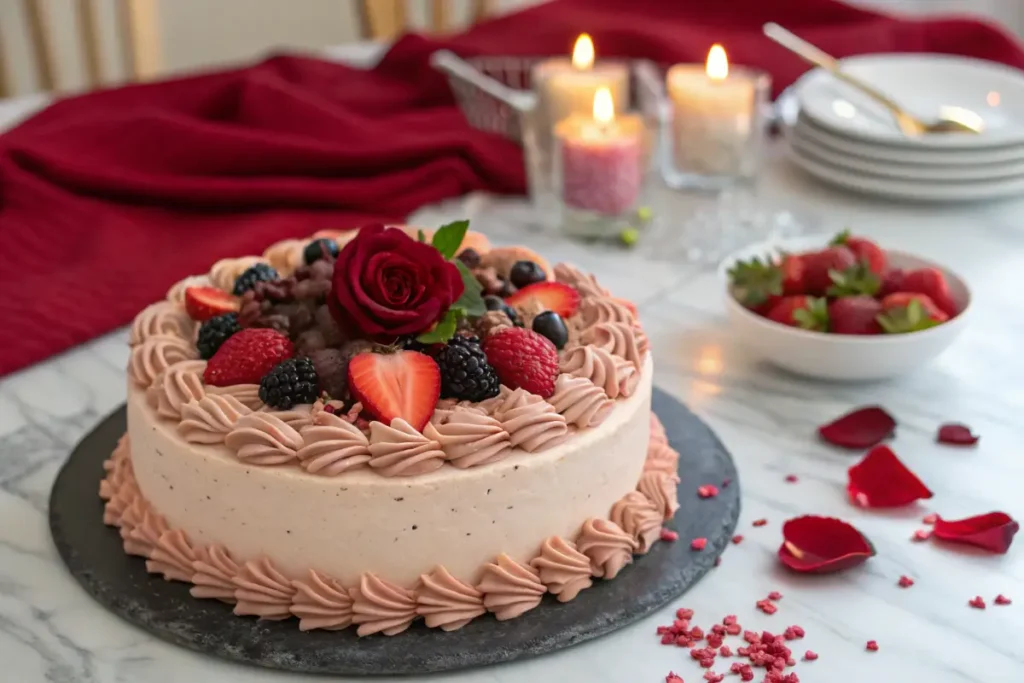
Variations and Customizations for Your Valentine Cake
Although a classic Valentine cake is always a delightful choice, adding a personal touch can make it even more special. Whether you prefer a different flavor, need a dietary-friendly version, or want to experiment with creative designs, there are countless ways to customize your cake. To help you find the perfect variation, we’ll explore several unique ideas that will impress your loved one.
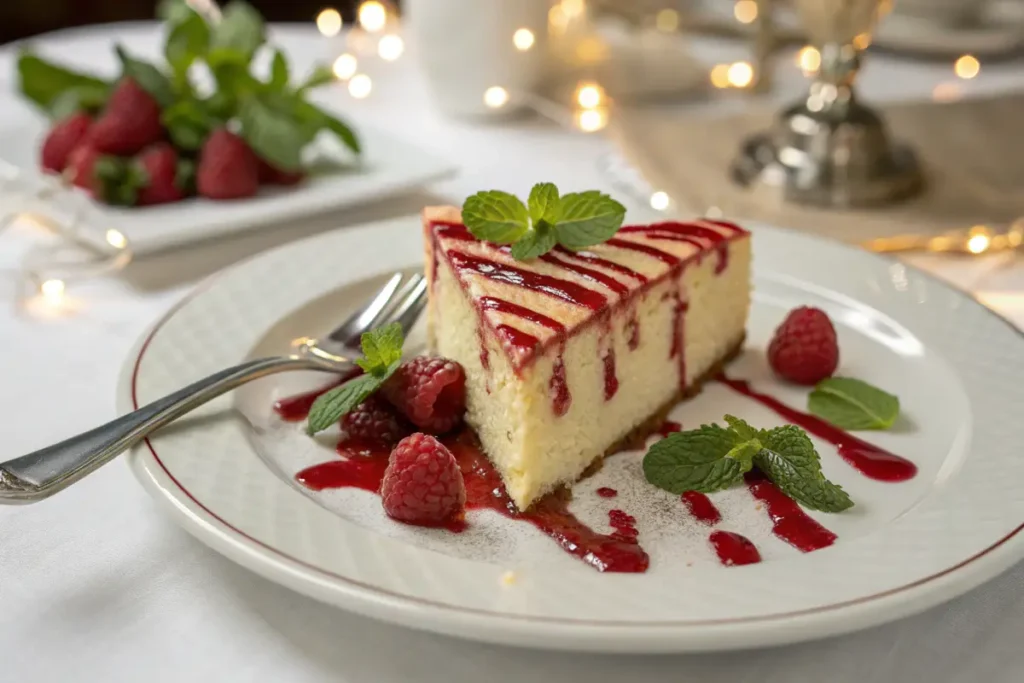
Exploring Different Flavors
While traditional flavors like chocolate and vanilla are always popular, there are many other delicious options to consider. Instead of sticking to the usual, why not try something new?
- Red Velvet Cake – Known for its deep red color and slight cocoa flavor, this cake pairs beautifully with cream cheese frosting. If you want a twist, consider adding a hint of orange zest for a refreshing contrast.
- Strawberry Shortcake – Light, fruity, and refreshing, this cake is perfect for those who prefer something less rich. By layering fresh strawberries with whipped cream, you create a naturally sweet dessert that tastes like pure romance.
- Chocolate Raspberry Cake – If you’re looking for a combination of rich and tart flavors, this is an excellent choice. Adding fresh raspberries to the batter or using raspberry jam between the layers enhances the cake’s natural sweetness.
- White Chocolate and Almond Cake – For a more delicate and nutty flavor, incorporating white chocolate and almond extract adds an elegant touch. To elevate the texture, consider sprinkling toasted almonds on top for a subtle crunch.
- Mocha Cake – Combining chocolate and coffee creates a bold, indulgent flavor that’s perfect for coffee lovers. Adding a little espresso powder to the batter intensifies the richness of the chocolate, making the cake even more decadent.
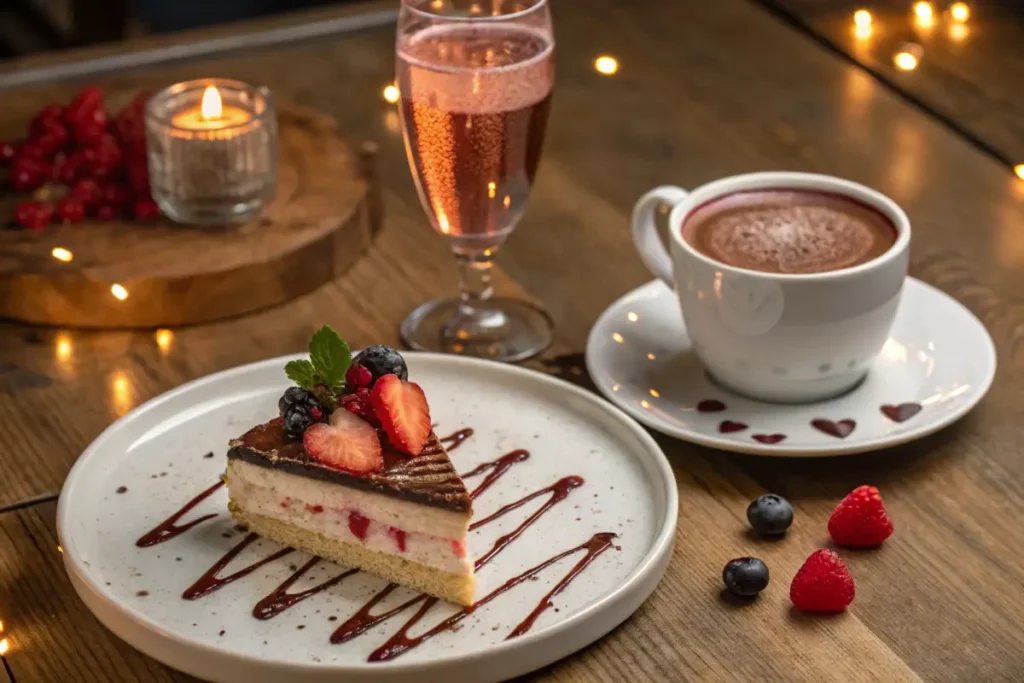
Adjusting the Recipe for Special Diets
Not everyone can enjoy traditional cakes, so having alternative options ensures that everyone can partake in the celebration. Fortunately, modifying the recipe to accommodate dietary needs is easier than you might think.
- Gluten-Free Valentine Cake – To create a gluten-free version, simply replace regular flour with a high-quality gluten-free flour blend. Adding a bit of xanthan gum helps maintain the cake’s structure, preventing it from becoming too crumbly.
- Vegan Valentine Cake – For a dairy-free and egg-free version, swap butter for plant-based alternatives like coconut oil or vegan margarine. Instead of eggs, using mashed bananas, applesauce, or flaxseed eggs keeps the cake moist and fluffy. Additionally, non-dairy milk options like almond milk or oat milk work well in place of regular milk.
- Low-Sugar or Keto Cake – If you’re cutting back on sugar, using natural sweeteners like monk fruit or erythritol is a great alternative. To keep the cake low in carbohydrates, almond flour or coconut flour can be used instead of traditional wheat flour.
- Dairy-Free Cake – Replacing butter with vegan butter or neutral oils like avocado oil ensures the cake remains moist while staying dairy-free. Additionally, swapping regular milk for coconut milk or cashew milk adds a deliciously creamy texture without the dairy.
Creative Ways to Decorate Your Cake
Beyond flavor, how you present your Valentine cake plays a huge role in making it special. Instead of settling for a basic design, try incorporating unique decorations that make the cake visually stunning.
- Heart-Shaped Cake – Rather than using a standard round pan, bake the cake in a heart-shaped pan to enhance the Valentine’s theme. If you don’t have a heart-shaped pan, cutting a round cake into a heart shape is a simple alternative.
- Ombre Frosting Effect – Blending different shades of pink, red, and white frosting creates a beautiful gradient that looks professional and elegant.
- Chocolate Drizzle – Adding a rich chocolate ganache drizzle over the cake instantly makes it more decadent. To make the effect even more dramatic, let the ganache drip naturally down the sides.
- Fresh Berries and Edible Flowers – Decorating the cake with fresh strawberries, raspberries, or edible roses creates a romantic and sophisticated appearance. Not only do these elements look beautiful, but they also add a fresh, natural sweetness.
- Personalized Messages – Writing a special message on the cake with piped frosting or melted chocolate makes the cake feel even more intimate and meaningful. Simple words like “I Love You” or “Happy Valentine’s Day” add a heartfelt touch.
- Sprinkles and Sugar Pearls – If you’re aiming for a festive look, using pink and red sprinkles, heart-shaped confetti, or edible glitter adds extra charm.
Fun Mini Cakes and Cupcake Variations
If a large cake feels too formal, consider making mini Valentine cakes or cupcakes instead. These individual-sized treats are perfect for sharing and can be customized easily.
- Mini Layer Cakes – Baking the batter in small cake pans and stacking the layers with buttercream creates adorable, personal-sized cakes.
- Heart-Shaped Cupcakes – To create heart-shaped cupcakes, place a small ball of foil between the cupcake liner and the pan. This trick gently molds the batter into a heart shape as it bakes.
- Filled Cupcakes – Injecting a filling, such as strawberry jam, raspberry curd, or melted chocolate, into the center of the cupcakes adds a delicious surprise inside.
- Chocolate-Dipped Cupcakes – Dipping the tops of frosted cupcakes into melted chocolate creates a rich, candy-like coating that adds extra indulgence.
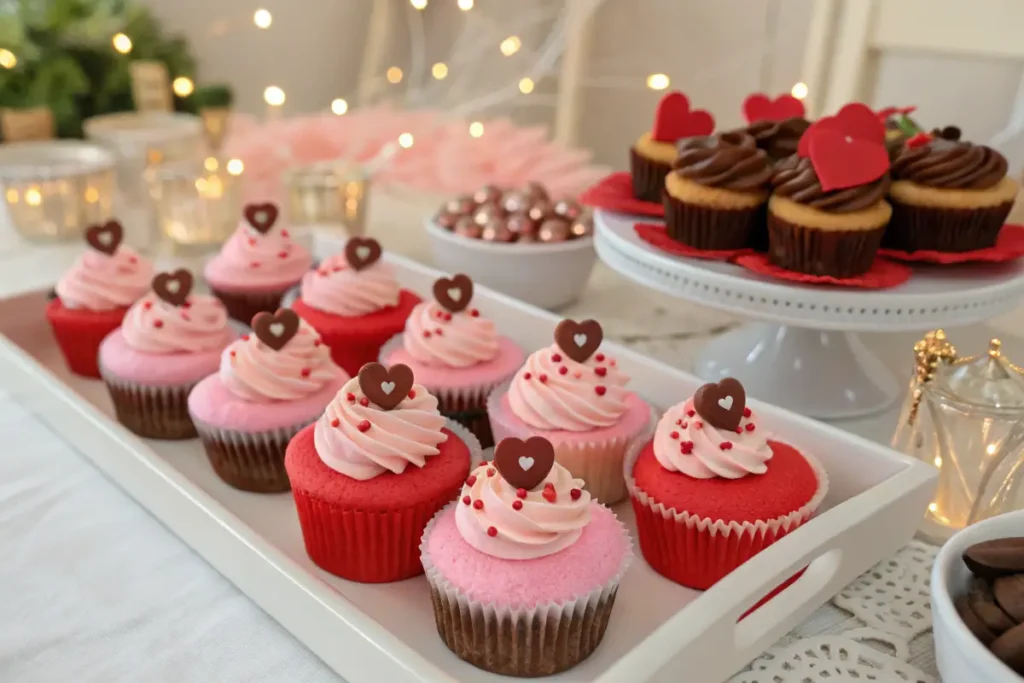
Choosing the Perfect Cake Pairings
To make the dessert experience even more delightful, pairing your Valentine cake with a complementary drink enhances the flavors and adds an extra layer of indulgence.
- Classic Champagne – A light and bubbly champagne balances the sweetness of the cake, making it a perfect celebratory pairing.
- Red Wine – A rich chocolate cake pairs beautifully with a deep red wine like Merlot or Cabernet Sauvignon, enhancing its intense flavors.
- Strawberry Milkshake – If serving cake to children or those who prefer non-alcoholic options, a strawberry milkshake creates a fun and delicious combination.
- Espresso or Coffee – For those who enjoy bold flavors, serving cake with freshly brewed coffee or espresso brings out the richness of chocolate-based cakes.
- Hot Chocolate – If the weather is cold, pairing a slice of cake with a creamy, homemade hot chocolate makes the dessert experience even more comforting.
Final Thoughts on Customizing Your Valentine Cake
With so many ways to customize and enhance a Valentine cake, there is no limit to how creative you can be. Whether you’re experimenting with flavors, decorating with love-themed designs, or adapting the recipe to fit dietary preferences, each variation adds a personal touch. Most importantly, taking the time to bake something from the heart makes the occasion even more meaningful.
Now that you have explored different customizations, let’s move on to the best serving suggestions to make your cake look even more stunning when presented.
Serving the Perfect Valentine Cake
Make Your Cake Look Stunning
To create a breathtaking presentation, place your cake on a decorative stand. Not only does this elevate the cake, but it also makes it the centerpiece of your Valentine’s table. Additionally, sprinkling powdered sugar or cocoa on top adds a delicate finishing touch. For extra romance, garnish with fresh strawberries, raspberries, or edible flowers.
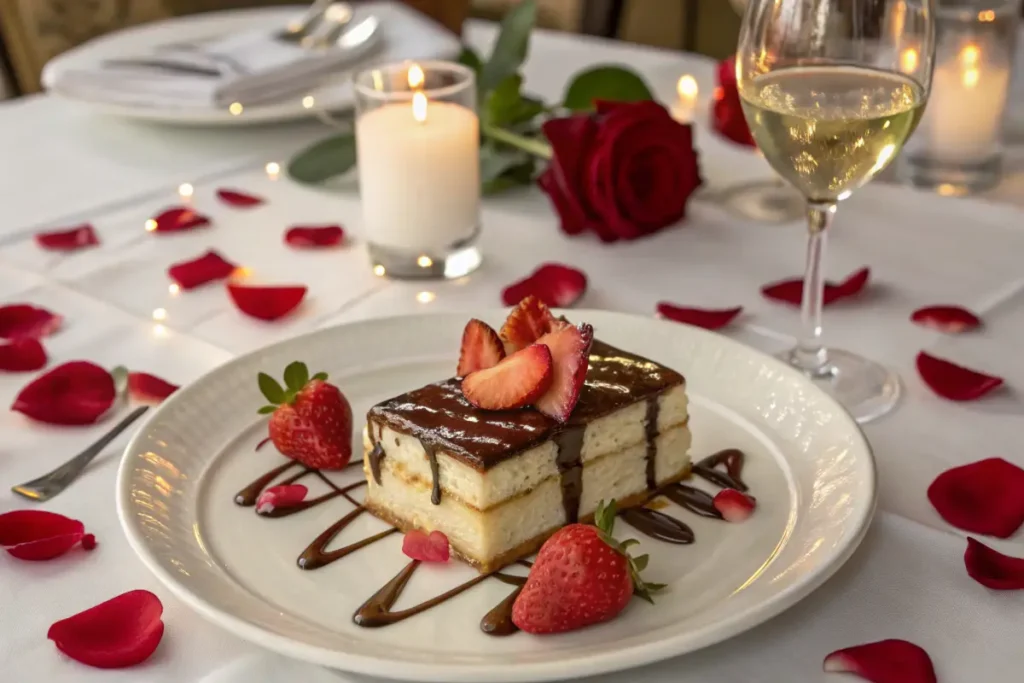
Plating for a Romantic Touch
Instead of serving plain slices, drizzle chocolate ganache or berry sauce on the plate first. This not only enhances flavor but also makes the dessert look elegant. Furthermore, pairing the cake with a scoop of vanilla ice cream or a dollop of whipped cream adds richness. For an even more festive feel, use heart-shaped plates or red napkins.
Perfect Drink Pairings
Choosing the right drink enhances the flavor of your Valentine cake. If serving chocolate cake, pair it with red wine or hot espresso. On the other hand, if you prefer a light vanilla or fruit-based cake, a strawberry milkshake or floral tea complements the flavors beautifully. For a truly celebratory touch, nothing pairs better than champagne or sparkling rosé.
Serving for Different Occasions
- Romantic Dinner for Two: Plate the cake elegantly with a personalized chocolate message like “I Love You.”
- Valentine’s Day Party: Cut the cake into bite-sized pieces or serve mini cupcakes for easy sharing.
- Family Celebration: Decorate with fun sprinkles and marshmallows to make it kid-friendly.
How to Store Leftovers
To keep your cake fresh, store it in an airtight container at room temperature for up to two days. If refrigerating, let it sit at room temperature for 30 minutes before serving. For long-term storage, freeze individual slices, then thaw when ready to enjoy.
Now that you’ve mastered serving, let’s take a look at the nutritional benefits of your Valentine cake.
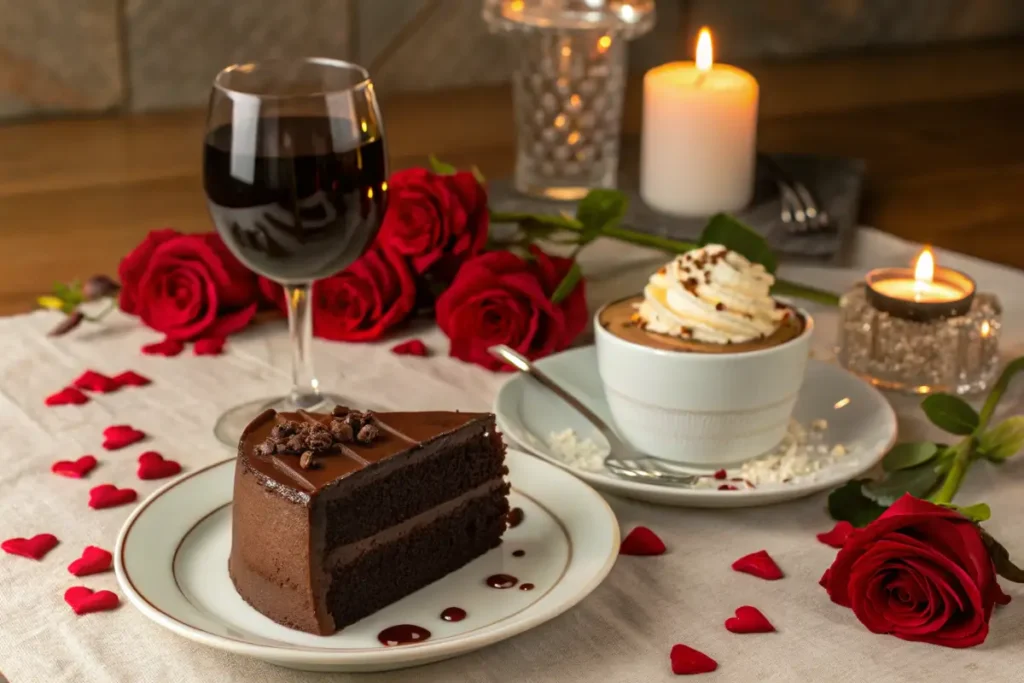
Conclusion: A Sweet Way to Celebrate Love
Baking a Valentine cake is more than just making a dessert—it’s a heartfelt way to express love and create beautiful memories. Whether you choose a classic chocolate cake, a romantic red velvet, or a fruity strawberry delight, every bite is a symbol of affection. By adding personalized decorations, thoughtful plating, and the perfect drink pairings, you can turn a simple cake into an unforgettable experience.
Not only does a homemade cake bring joy, but it also adds a personal touch that store-bought desserts simply can’t match. Additionally, customizing flavors, using creative presentation ideas, and incorporating unique serving techniques make the occasion even more special. Furthermore, whether you are celebrating with a romantic partner, close family, or dear friends, sharing a delicious cake always brings people closer together.
As you prepare to serve your Valentine cake, remember that the most important ingredient is love. No matter how it looks or tastes, the effort and thought behind it will always make it meaningful. So, set the table, light the candles, and savor each bite with someone special. After all, there’s no better way to celebrate love than with a homemade cake made straight from the heart.
Happy baking, and may your Valentine’s Day be filled with love, joy, and of course, sweet treats!
Print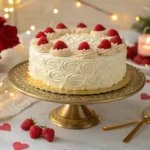
Sweet Valentine Cake
- Total Time: 50 minutes
- Yield: 10–12 servings 1x
Description
Celebrate love with this Sweet Valentine Cake, a moist and flavorful dessert perfect for Valentine’s Day. With rich flavors, a soft texture, and a romantic presentation, this cake will impress your loved one. Whether you choose classic red velvet, chocolate, or a fruity variation, this recipe ensures a delightful treat for any special occasion.
Ingredients
For the Cake:
- 2 ½ cups all-purpose flour
- 1 ¾ cups granulated sugar
- 1 cup unsalted butter (softened)
- 4 large eggs (room temperature)
- 1 cup whole milk or buttermilk
- ½ cup cocoa powder (if making a chocolate version)
- 2 tsp vanilla extract
- 2 tsp baking powder
- ½ tsp baking soda
- ½ tsp salt
For the Frosting:
- 2 cups unsalted butter (softened)
- 4 cups powdered sugar
- 1 tbsp vanilla extract
- 2 tbsp heavy cream or milk
- Food coloring (red or pink, optional)
For Decoration:
- Fresh strawberries or raspberries
- Chocolate shavings or sprinkles
- Edible flowers (optional)
Instructions
Step 1: Prepare the Cake Batter
- Preheat your oven to 350°F (175°C). Grease and line two 9-inch cake pans with parchment paper.
- In a large bowl, beat the butter and sugar together until light and fluffy.
- Add eggs one at a time, mixing well after each addition. Stir in vanilla extract.
- In a separate bowl, whisk together flour, baking powder, baking soda, and salt.
- Gradually mix the dry ingredients into the wet mixture, alternating with the milk.
- If making a chocolate version, stir in cocoa powder at this stage.
Step 2: Bake the Cake
- Divide the batter evenly between the cake pans.
- Bake for 25-30 minutes, or until a toothpick inserted in the center comes out clean.
- Let the cakes cool in the pans for 10 minutes, then transfer them to a wire rack to cool completely.
Step 3: Make the Frosting
- In a large bowl, beat the butter until creamy.
- Gradually add powdered sugar, mixing until smooth.
- Stir in vanilla extract and heavy cream, beating until fluffy. Add food coloring if desired.
Step 4: Assemble and Decorate
- Spread frosting on one cake layer, then place the second layer on top.
- Frost the entire cake, smoothing the sides with a spatula.
- Decorate with fresh berries, chocolate shavings, or edible flowers.
Notes
- For a gluten-free version, use a gluten-free flour blend.
- To make a vegan version, replace eggs with flax eggs and use plant-based milk and butter.
- For extra moisture, brush cake layers with simple syrup before frosting.
- Storage Tip: Keep the cake covered at room temperature for two days, or refrigerate for up to five days.
- Prep Time: 20 minutes
- Cook Time: 30 minutes
- Category: Dessert
- Method: Baking
- Cuisine: American
Nutrition
- Serving Size: (Per Serving)
- Calories: 450 kcal
- Sugar: 38g
- Sodium: 200mg
- Fat: 22g
- Saturated Fat: 12g
- Unsaturated Fat: 8g
- Trans Fat: 0g
- Carbohydrates: 58g
- Fiber: 2g
- Protein: 5g
- Cholesterol: 85mg
Keywords: Valentine cake, chocolate cake, red velvet cake, romantic dessert

